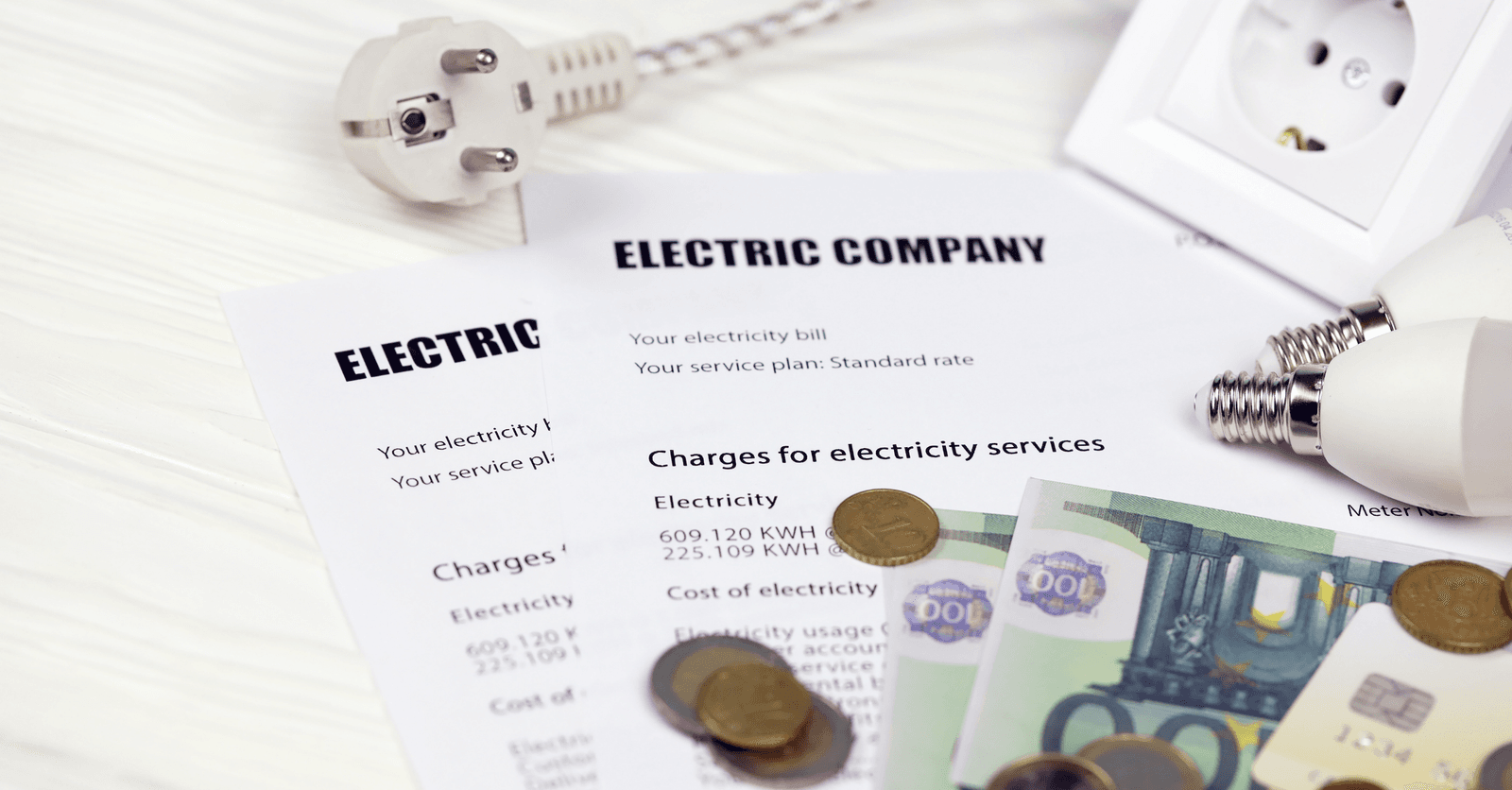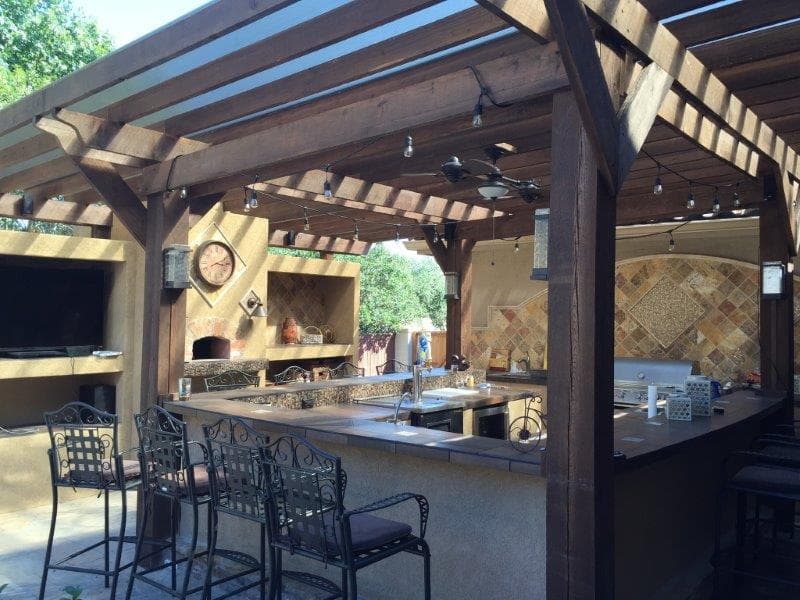
Slab insulation plays a key role in overall home construction as it improves energy efficiency, controls moisture, increases durability, and reduces energy costs. Although your concrete slab insulation might vary depending on local building codes, it doesn't hurt to install one in your home.
If you want to know more about slab insulation, such as information regarding the best insulation methods and their benefits, basement slab insulation regulations, and the price for the best insulation boards, keep scrolling to the end so you don't miss anything.
How to Insulate a Garage Slab

Source: Canva
If you’ve started noticing cracks or fissures in your concrete slab, the most probable reason is that it most likely wasn’t adequately protected, and in this section of the article, you’ll learn about the best ways to do so. Unfortunately, a lot of homeowners assume that heating their floor is the only thing they need to do to make up for a poorly insulated garage floor, or an inadequately insulated concrete slab. However, overheating your garage slab can result in a significant increase in your heating bill and a quick deterioration of the slab. That's why it's important to carefully consider insulating your garage slab.
So, how should you proceed? Essentially, in the construction industry, there are two main methods:
Laying insulation atop concrete slab: This method consists of making a sort of “sandwich” with the insulation and your slab to eliminate thermal bridges. Here, the insulation panels are laid in place and covered by a concrete screed.
Laying under-slab insulation: This method is ideal when renovating the existing floor. To do so, the contractor will install insulation panels before pouring the concrete. Insulation material beneath the slab allows for a constant, yet low source of heat, one that progressively heats the concrete’s thermal mass and maintains a constant temperature.
Now that you’re familiar with the different insulation methods, you’re going to want to know more about the insulation materials designed for garage slab insulation. There are a lot of different options available on the Canadian market, however, professionals most often recommend polyurea and plain epoxy floor coatings.
Polyurea is ideal as a concrete garage floor protective coating. Garage floors are constantly under stress from a variety of substances, including calcium and other chemicals. It can also expand and shrink as a result of humidity and temperature fluctuations. Add water infiltration to the mix, and you've got the right combination for the surface to succumb to cracks. A polyurea cover is a perfect solution, because this coating is flexible, withstands great temperature variations, and tends to shadow the movements of concrete. With this coating, your garage slab will be more resistant to water infiltration (no risk of cracking). However, for optimal insulation, we recommend hiring professionals to tackle the job.
Epoxy (plain or clear): This one is also known to be an excellent insulation material because it’s really durable. Unlike polyurea, epoxy does require some alterations to better adapt to the garage floor’s unstable nature. However, if you still wish to use an epoxy coating for your concrete slab project, definitely opt for plain epoxy. It benefits those who reside in snow-prone regions, where salts and deicing fluids can damage the concrete. Furthermore, epoxy coatings consistently get good reviews from mechanics and DIY enthusiasts. Since it's as resistant to chemicals as it is to stains, brake fluids and gasoline and other harsh car chemicals can easily be wiped off, even if they linger on the surface for an extended period of time.
To sum it up, an epoxy coating is suitable for living areas, while polyurea will be much more appropriate for garage floors.
Basement Concrete Slab Insulation Regulations
As of August 2012, the National Building Code of Canada, which serves as the basis for the Quebec Construction Code, stipulated that under-slab insulation must be installed in all newly constructed buildings. Additionally, the insulation system must be able to provide both air and vapour barrier functions. These new building codes have been adopted in an effort to mitigate climate change and increase overall energy efficiency.
To comply with the new laws regarding under-slab insulation, here are the three procedures to apply:
Concrete slab surface has an overall R-5 value;
An R-7.5 value over a distance of 4 feet around the under-slab perimeter;
Overall R-10 value on the entire surface if you’re building a heated floor.
Reminder: The R-value of insulation materials measures the effectiveness of a type of insulation in regard to heat flow resistance. The higher a material’s R-value, the more effective it is in preventing heat transfer.
Steps to Insulating a Basement Concrete Slab

Source: Canva
If you want to insulate your basement concrete slab, here are the basic steps recommended by constructions professionals:
Prepare and level out the ground. To do so, you’ll need to use four inches of gravel.
Once the prep work and the levelling are done, spray 1.5 inches of Type II R-6 spray urethane foam on the gravel itself. This layer is applied in such a way that the urethane will act as an air and vapour barrier despite the irregularities of gravel.
Given that the Construction Code of Quebec requires thermal insulation between foundation walls and the slab, apply urethane all the while raising the foundation walls by about 15.24 cm (6 inches).
Now, pour your concrete slab and put up the partitions (2 by 4).
To finish it off, use spray urethane foam to insulate the edges and the foundations.
Are you looking for experts for your slab insulation project?
Fill in this form to be connected with top-rated contractors!
Additional Basement Slab Insulation Options
If, for one reason or another, you don’t want to use polyurea to insulate your basement concrete slab, here are other options available to you:
STYROFOAM BOARDS
These lightweight and rigid panels are a favourite in Canada. Since the bulk of this material is air, it's a terrible heat conductor, but makes for an excellent convector: It creates tiny pockets of air that prevent thermal energy transfer. Therefore, styrofoam boards are effective insulators since they limit heat transfer by conduction and convection. And because it retains air and reduces heat flow, it keeps the building's interior warmer for longer. Note that in Canada, compression-strength Styrofoam boards are available in stores, for example, as load-bearing structures. However, the downside is that they're not easy to anchor.
POLYTHENE VAPOUR BARRIERS
These are used to manage natural water vapour caused by the building’s overall use. This material was designed to address a wide variety of structural systems, providing specific solutions for various uses and requirements. They also act as an effective draft barrier to prevent unwanted convection flow losses.
RADIANT BARRIERS
Such an insulation system works by reflecting heat as well as maintaining cool air within spaces during summer, without air conditioning. However, it's different from other types of insulation: its effectiveness can’t be measured by an R-value. It usually consists of a double layer of polyethylene bubble wrap enclosed between layers of 99% pure aluminum on one side and white polyethylene on the other. This insulation is used for a variety of insulation purposes, including basement floors and concrete garage slabs. To install, simply lay down the insulation, unfurl it, and seal the joints with tape.
Read more about insulating basement floors in our article.
Pricing Details for a Slab Insulation Panel

Source: Canva
If you live in Quebec, make sure to familiarize yourself with the different prices in regard to slab insulation. For instance, note that you’ll need to spend about $45.90 to purchase an Iflexfoam 160 insulation panel (dimensions: 2 1/2 in x 4 ft x 8 ft). This material is made from high-density expanded polystyrene, and then it’s laminated with a polypropylene membrane on both sides. The bottom membrane is covered in very small holes across its entire surface. It can be used as under-slab insulation, as well as garage insulation in commercial or residential environments. Since it's made of at least 95% air and no more than 5% plastic, it has fewer toxicity risks than traditional building materials.
FAQ – Frequently Asked Questions
How do I insulate a slab on top of an existing foundation?
To insulate solid ground beneath a concrete slab, you have the option of using PIR insulation panels (rigid foam boards) or EPS insulation panels (expanded polystyrene). EPS can be a very cost-effective alternative to PIR floor insulation, and with a thicker layer, the same thermal performance can be achieved.
What’s a monolithic slab, and what are its advantages?
In civil engineering, the monolithic slab is referred to as a “slab on grade” foundation. It consists of a single pour of cement, with thicker patches of concrete around the periphery and areas supporting load-bearing walls. It's energy-efficient, meaning it requires less energy to heat and cool your home; it's low maintenance, quick to install and dries faster than any other type of cement foundation. However, the biggest concern with slab-on-grade insulation is that it's exposed, and thus susceptible to damage.
Get 3 quotes for your slab insulation project
Renoquotes.com can help you get quotes for your slab insulation project. By submitting your project, we’ll put you in contact with top-rated contractors. Fill in the form on the homepage (it only takes a few minutes), and you will get estimates from trusted professionals.
Dial 1-844 828-1588 to speak with one of our customer service representatives.
Looking for something else?
Related articles
The latest industry news, interviews, technologies, and resources.

Editorial Team
•15 Nov 2024
Given our harsh winter, a decent heating system is a must-have to reap the benefits of a warm, comfortable home. However, as you're probably well aware since the day you paid your first utility bill, a cozy dwelling isn’t cheap.

Équipe éditoriale
•07 Nov 2023
As the weather outdoors begins to warm up, there’s not much we’re thinking about other than finding ways to spend time outside. Maybe this is the year you’re finally going to build and install an outdoor kitchen in your backyard! When it comes to designing an outdoor space, functionality, practicality, and personality are very important traits. In the project planning process, be certain to keep your lifestyle in mind as you’ll be more likely to make use of the space if it works in accordance with your wants and needs.

Editorial Team
•23 Jul 2025
Your lawn and garden say a lot about you! Aside from leaving the first impression on visitors and those passing by, your landscaping enhances your home’s appearance and makes you proud of the place you call your own. With the right planning, careful maintenance and upkeep, you can have a near-perfect lawn.

Amanda Harvey
•25 Sep 2024
The purchase of a heat pump is often done with the aim of saving energy and watching heating and air conditioning bills plummet.

Editorial Team
•15 Nov 2024
In Quebec, each year we live through a very hot summer and an extremely cold winter. These two realities mean that in this beautiful province, heating and air conditioning aren’t to be taken lightly. And for good reason: Your survival kind of depends on it!